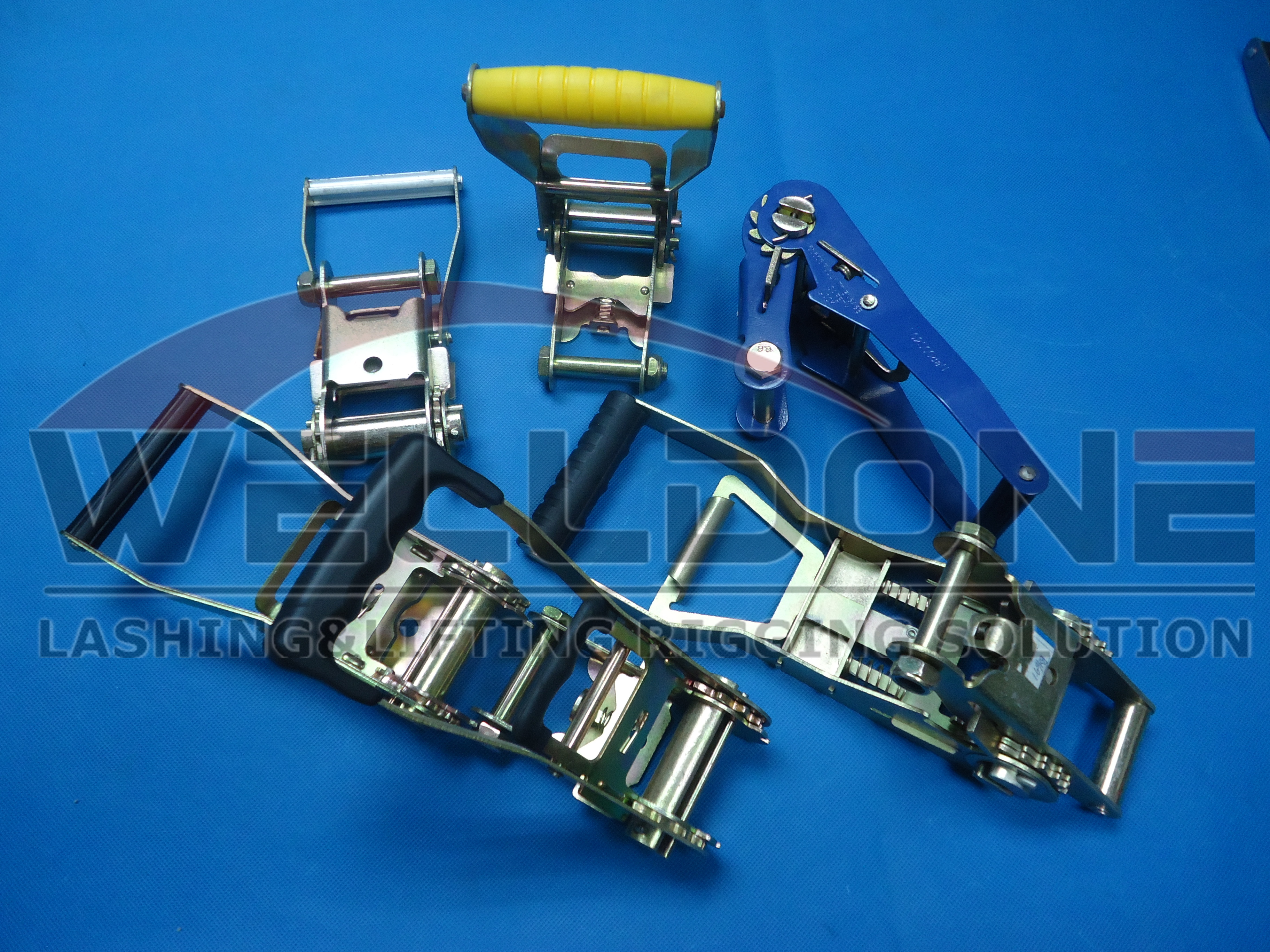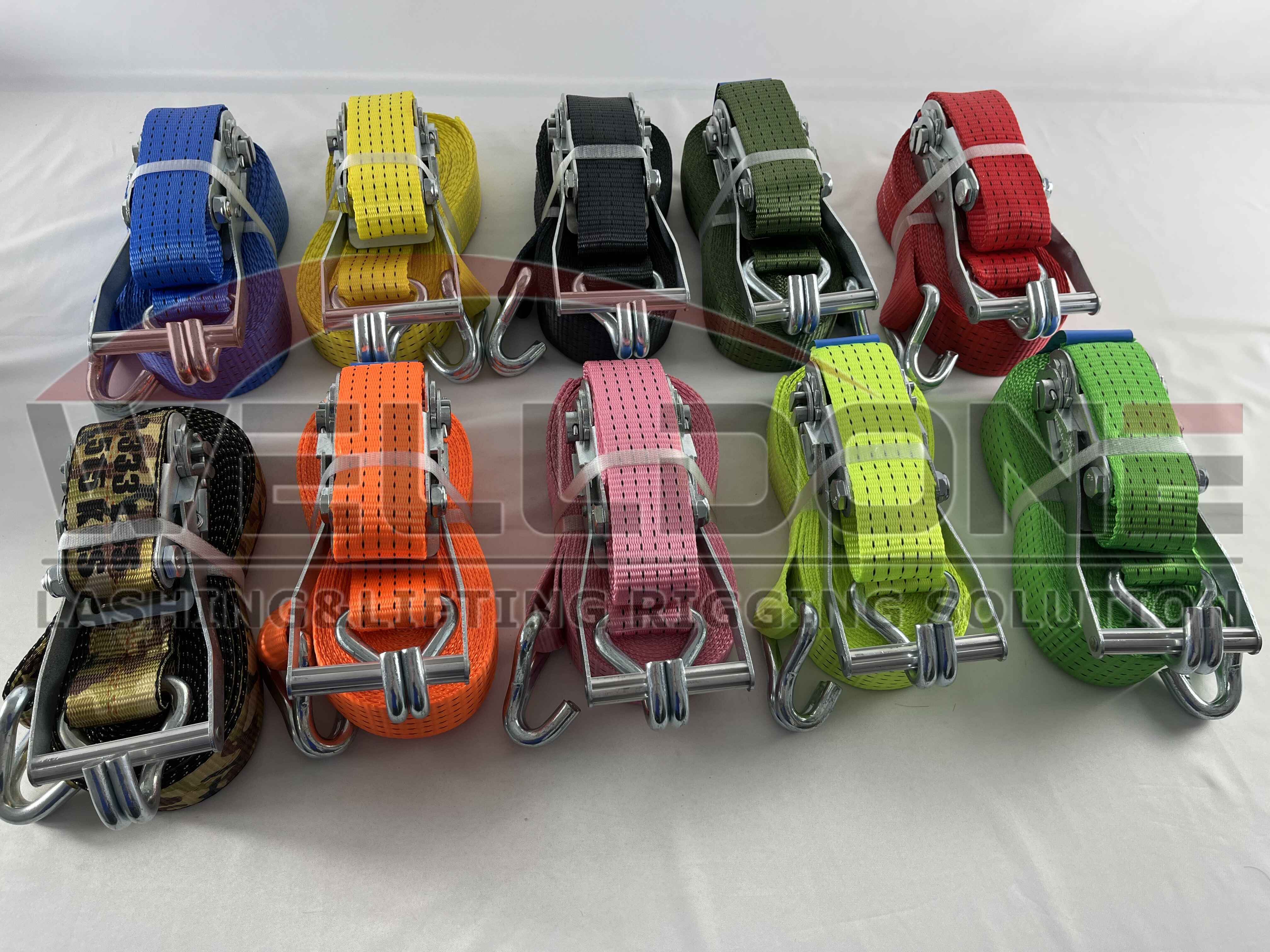SHF:
Standard hand force: Hand operation force of 500N(50daN on the label).
STF:
Standard tension force: Residual force after release the handle of the ratchet buckle.
Elongation:
The measurement of stretch, at a given load, expressed as a percentage of the original unloaded length. All materials subject to tension will stretch and different materials have different rates of strentch at the same tensile load.
For ratchet strap, Elongation is from 4% to 7%.
Temperature:
Tie down strap using polypropylene or polyester webbing shall not be used at temperatures in excess 90℃ or below -40℃.
Repair:
There shall be no repairs of webbing, ratchet buckle, hook or stitching/sew patterns.
Standard:
EN 12195-2, AS/NZS 4380, and WSTDA-T-1 are all standards that govern the specifications, testing, and usage of ratchet straps and tie down assemblies used for securing cargo. While they share similarities in purpose, they have differences based on their geographical origin, specific requirements, and testing methods.
1. EN 12195-2
- Region: Europe (European Standard).
- Title: Load Restraint Assemblies on Road Vehicles – Safety Part 2: Web Lashing Made from Man-made Fibres.
- Scope:Usage: Focuses on European vehicle transport requirements, including tensioning devices, lashing capacities (LC), and compliance with European road safety regulations.
- Covers lashing systems made of synthetic fibers.
- Specifies minimum requirements for dimensions, materials, performance, and testing.
- Includes detailed calculations for lashing forces.
- Emphasizes safety factors, elongation limits, and breaking strength.
- Breaking strength:Load capacity:= 2:1
2. AS/NZS 4380
- Region: Australia and New Zealand.
- Title: Cargo Restraint Systems – Webbing Load Restraint Assemblies.
- Scope:Usage: Designed for domestic and export transport industries in Australia and New Zealand, ensuring safe load restraint practices.
- Defines specifications for lashing straps used for cargo restraint.
- Includes material properties, dimensions, performance requirements, and labeling standards.
- Focuses on durability in harsh environmental conditions, such as UV resistance and high temperatures, which are particularly relevant to Australia and New Zealand.
- Requires a specified safety factor for breaking loads, a protective cover on webbing.
- Breaking strength:Load capacity::= 2:1
3. WSTDA-T-1
- Region: United States (published by the Web Sling & Tie Down Association).
- Title: Recommended Standard Specification for Synthetic Web Tie downs.
- Scope:Usage: Primarily used in North America, focusing on transportation industries and federal transportation regulations.
- Provides guidelines for the design, testing, and use of synthetic web tiedown straps.
- Focuses on material strength, elongation limits, and resistance to environmental factors (e.g., UV degradation and chemical exposure).
- Requires proper labeling with working load limits (WLL) and identification details.
- Safety factor is typically 3:1 for the working load limit.
- Breaking strength:Load capacity=3:1
Post time: Dec-26-2024









